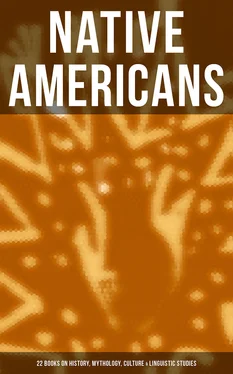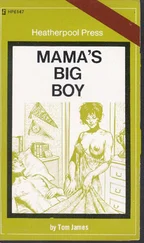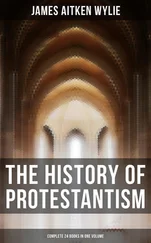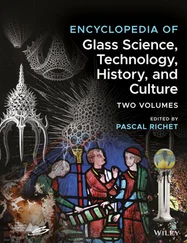| Males under 10 years of age |
21 |
|
| Males between 10 and 20 years of age |
45 |
|
| Males between 20 and 60 years of age |
38 |
|
| Males over 60 years of age |
8 |
|
|
—— |
112 |
| Females under 10 years of age |
23 |
|
| Females between 10 and 20 years of age |
18 |
|
| Females between 20 and 60 years of age |
46 |
|
| Females over 60 years of age |
9 |
|
|
—— |
96 |
|
|
—— |
|
|
208 |
In this table it will be noticed that the total population consists of 112 males and 96 females, an excess of males over females of 16. This excess appears in each of the settlements, excepting that of Fish Eating Creek, a fact the more noteworthy, from its relation to the future of the tribe, since polygamous, or certainly duogamous, marriage generally prevails as a tribal custom, at least at the Miami River and the Cat Fish Lake settlements. It will also be observed that between twenty and sixty years of age, or the ordinary range of married life, there are 38 men and 46 women; or, if the women above fifteen years of age are included as wives for the men over twenty years of age, there are 38 men and 56 women. Now, almost all these 56 women are the wives of the 38 men. Notice, however, the manner in which the children of these people are separated in sex. At present there are, under twenty years of age, 66 boys, and, under fifteen years of age, but 31 girls; or, setting aside the 12 boys who are under five years of age, there are, as future possible husbands and wives, 54 boys between five and twenty years of age and 31 girls under fifteen years of age—an excess of 23 boys. For a polygamous society, this excess in the number of the male sex certainly presents a puzzling problem. The statement I had from some cattlemen in mid-Florida I have thus found true, namely, that the Seminole are producing more men than women. What bearing this peculiarity will have upon the future of these Indians can only be guessed at. It is beyond question, however, that the tribe is increasing in numbers, and increasing in the manner above described.
There is no reason why the tribe should not increase, and increase rapidly, if the growth in numbers be not checked by the non-birth of females. The Seminole have not been at war for more than twenty years. Their numbers are not affected by the attacks of wild animals or noxious reptiles. They are not subject to devastating diseases. But once during the last twenty years, as far as I could learn, has anything like an epidemic afflicted them. Besides, at all the settlements except the northernmost, the one at Cat Fish Lake, there is an abundance of food, both animal and vegetable, easily obtained and easily prepared for eating. The climate in which these Indians live is warm and equable throughout the year. They consequently do not need much clothing or shelter. They are not what would be called intemperate, nor are they licentious. The “sprees” in which they indulge when they make their visits to the white man’s settlements are too infrequent to warrant us in classing them as intemperate. Their sexual morality is a matter of common notoriety. The white half-breed does not exist among the Florida Seminole, and nowhere could I learn that the Seminole woman is other than virtuous and modest. The birth of a white half-breed would be followed by the death of the Indian mother at the hands of her own people. The only persons of mixed breed among them are children of Indian fathers by negresses who have been adopted into the tribe. Thus health, climate, food, and personal habits apparently conduce to an increase in numbers. The only explanation I can suggest of the fact that there are at present but 208 Seminole in Florida is that at the close of the last war which the United States Government waged on these Indians there were by no means so many of them left in the State as is popularly supposed. As it is, there are now but 17 persons of the tribe over sixty years of age, and no unusual mortality has occurred, certainly among the adults, during the last twenty years. Of the 84 persons between twenty and sixty years of age, the larger number are less than forty years old; and under twenty years of age there are 107 persons, or more than half the whole population. The population tables of the Florida Indians present, therefore, some facts upon which it may be interesting to speculate.
Chapter I.
Personal Characteristics
Table of Contents
It will be convenient for me to describe the Florida Seminole as they present themselves, first as individuals, and next as members of a society. I know it is impossible to separate, really, the individual as such from the individual as a member of society; nevertheless, there is the man as we see him, having certain characteristics which, we call personal, or his own, whencesoever derived, having a certain physique and certain, distinguishing psychical qualities. As such I will first attempt to describe the Seminole. Then we shall be able the better to look at him as he is in his relations with his fellows: in the family, in the community, or in any of the forms of the social life of his tribe.
Table of Contents
Table of Contents
Physically both men and women are remarkable. The men, as a rule, attract attention by their height, fullness and symmetry of development, and the regularity and agreeableness of their features. In muscular power and constitutional ability to endure they excel. While these qualities distinguish, with a few exceptions, the men of the whole tribe, they are particularly characteristic of the two most widely spread of the families of which the tribe is composed. These are the Tiger and Otter clans, which, proud of their lines of descent, have been preserved through a long and tragic past with exceptional freedom from admixture with degrading blood. Today their men might be taken as types of physical excellence. The physique of every Tiger warrior especially I met would furnish proof of this statement. The Tigers are dark, copper-colored fellows, over six feet in height, with limbs in good proportion; their hands and feet well shaped and not very large; their stature erect; their bearing a sign of self-confident power; their movements deliberate, persistent, strong. Their heads are large, and their foreheads full and marked. An almost universal characteristic of the Tiger’s face is its squareness, a widened and protruding under-jawbone giving this effect to it. Of other features, I noticed that under a large forehead are deep set, bright, black eyes, small, but expressive of inquiry and vigilance; the nose is slightly aquiline and sensitively formed about the nostrils; the lips are mobile, sensuous, and not very full, disclosing, when they smile, beautiful regular teeth; and the whole face is expressive of the man’s sense of having extraordinary ability to endure and to achieve. Two of the warriors permitted me to manipulate the muscles of their bodies. Under my touch these were more like rubber than flesh. Noticeable among all are the large calves of their legs, the size of the tendons of their lower limbs, and the strength of their toes. I attribute this exceptional development to the fact that they are not what we would call “horse Indians” and that they hunt barefoot over their wide domain. The same causes, perhaps, account for the only real deformity I noticed in the Seminole physique, namely, the diminutive toe-nails, and for the heavy, cracked, and seamed skin which covers the soles of their feet. The feet being otherwise well formed, the toes have only narrow shells for nails, these lying sunken across the middles of the tough cushions of flesh, which, protuberant about them, form the toe-tips. But, regarded as a whole, in their physique the Seminole warriors, especially the men of the Tiger and Otter gentes, are admirable. Even among the children this physical superiority is seen. To illustrate, one morning Ko-i-ha-tco’s son, Tin-fai-yai-ki, a tall, slender boy, not quite twelve years old, shouldered a heavy “Kentucky” rifle, left our camp, and followed in his father’s long footsteps for a day’s hunt. After tramping all day, at sunset he reappeared in the camp, carrying slung across his shoulders, in addition to rifle and accouterments, a deer weighing perhaps fifty pounds, a weight he had borne for miles. The same boy, in one day, went with some older friends to his permanent home, 20 miles away, and returned. There are, as I have said, exceptions to this rule of unusual physical size and strength, but these are few; so few that, disregarding them, we may pronounce the Seminole men handsome and exceptionally powerful.
Читать дальше












